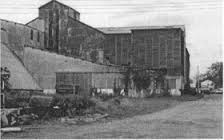AGENT ORANGE AND OTHER HERBICIDES and PESTICIDES HAVE CAUSED ILLNESSES SUCH AS PARKINSON'S DISEASE AND ETC:
STORAGE/TESTING AND ETC. PLEASE SEE WHAT STATES AND LOCATION AND ETC.
Maryland
Location: Camp Detrick, MD - Fields A, B, and C
Dates: 1946-47
Project Description: The experiments were directed mainly towards the investigation of plant inhibitors applied as sprays or to the soil in the solid form to be taken up by the roots.
Agents: 2,4,5-T, 2,4,5-T triethanolamine, tributylphosphate, ethyl 2,4-D, butyl 2,4,5-Ttriet 2,4-D
DoD Involvement: Yes
Location: Camp Detrick, MD - Fields C, D, and E
Dates: 1948
Project Description: The experiments were directed mainly towards the investigation of plant inhibitors applied as sprays or to the soil in the solid form to be taken up by the roots.
Agents: 2,4,5-T, isopropyl phenol carbamate, LN-2426, 2,4-D
DoD Involvement: Yes
Location: Camp Detrick, MD - Fields C, D, and E
Dates: 1949
Project Description: The experiments were directed mainly towards the investigation of plant inhibitors applied as sprays or to the soil in the solid form to be taken up by the roots. Experiments were done by Ennis, DeRose, Newman, Williamson, DeRigo, and Thomas.
Agents: Triethelyne. 2,4,5-T, carbamates
DoD Involvement: Yes
Location: Camp Detrick, MD - Fields A, B, D, and E
Dates: 1950
Project Description: The experiments were directed mainly towards the investigation of plant inhibitors applied as sprays or to the soil in the solid form to be taken up by the roots. Experiments were done by Ennis, DeRose, Acker, Newman, Williamson, and Zimmerly.
Agents: 2464, butyl 2,4-D, 974, butyl 2,4,5-T, q:q 143 and 974
DoD Involvement: Yes
Location: Camp Detrick, MD - Field F
Dates: 1950-51
Project Description: The experiments were directed mainly towards the investigation of plant inhibitors applied as sprays or to the soil in the solid form to be taken up by the roots. Experiments were done by Acker, DeRose, McLane, Newman, Williamson, Baker, Dean, Johnson, Taylor, Walker, and Zimmerly.
Agents: 2464, carbamate, butyl 2,4-D, 143 and 974 (orange?),2,4,5-T, 2,4-D, Orange
DoD Involvement: Yes
Location: Area B, Camp Detrick, MD
Dates: Spring/Summer 1953
Project Description: Personnel at Camp Detrick tested the feasibility of using an experimental spray tower for applying a mixture of chemical anticrop agents to broad-leaf crops.
Agents: 3:1 mixture 2, 4-D and 2, 4, 5-T
DoD Involvement: Yes
Location: Fort Detrick, MD; Fort Ritchie, MD
Dates: 1956-57
Project Description: In 1956 And 1957, defoliation and desiccation were carried out at Fort Detrick and Fort Ritchie, Maryland by the Chemical Corps and Biological Warfare Research. These were bench tests.
Agents: Various, 577 compounds
DoD Involvement: Yes
Location: Fort Detrick, MD
Dates: 8/1961 - 6/1963
Project Description: From 8/1961 to 6/1963, compounds were spray-tested in the greenhouse to evaluate them as effective defoliants, desiccants, and herbicides.
Agents: 1410 compounds
DoD Involvement: Yes
Location: Fort Ritchie, MD
Dates: 1963
Project Description: Various studies were done to explore the effectiveness of different herbicides. They were all field trials. These studies were done by personnel from the US Army Biological Laboratories.
Agents: Tordon, 2,4-D, Orange, diquat, endothal, and combinations of each with Tordon
DoD Involvement: Yes
Location: Fort Meade, MD
Dates: 1963
Project Description: Various studies were done to explore the effectiveness of different herbicides. They were all field trials. These studies were done by personnel from the US Army Biological Laboratories.
Agents: Cacodylic acid, Dowco 173, butyediol
DoD Involvement: Yes
Location: Poole's Island, Aberdeen Proving Ground, MD
Dates: 7/14/1969 -
Project Description: During the week of 7/14/1969, personnel from Naval Applied Science Laboratory in conjunction with personnel from Limited War Laboratory conducted a defoliation test along the shoreline.
Agents: Orange, Orange plus foam, Orange plus foam Orange, Foam
DoD Involvement: Yes
- See more at: http://www.publichealth.va.gov/exposures/agentorange/locations/tests-storage/usa.asp#Maryland
http://www.publichealth.va.gov/exposures/agentorange/locations/tests-storage/usa.asp#sthash.vZVAtgB6.dpuf
Click on or copy the link below and paste by placing it on search area:
http://www.publichealth.va.gov/exposures/agentorange/locations/tests-storage/usa.as
 isn’t surprising to many families who grew up in the Central Valley and have a child diagnosed with autism.
isn’t surprising to many families who grew up in the Central Valley and have a child diagnosed with autism. of having children with autism.
of having children with autism. Irva Hertz-Picciotto at the MIND Institute.
Irva Hertz-Picciotto at the MIND Institute. it to hopefully one day find a cure,” he said.
it to hopefully one day find a cure,” he said. more about autism and potential links. And they urge all pregnant women to avoid contact with agricultural chemicals whenever possible.
more about autism and potential links. And they urge all pregnant women to avoid contact with agricultural chemicals whenever possible.

